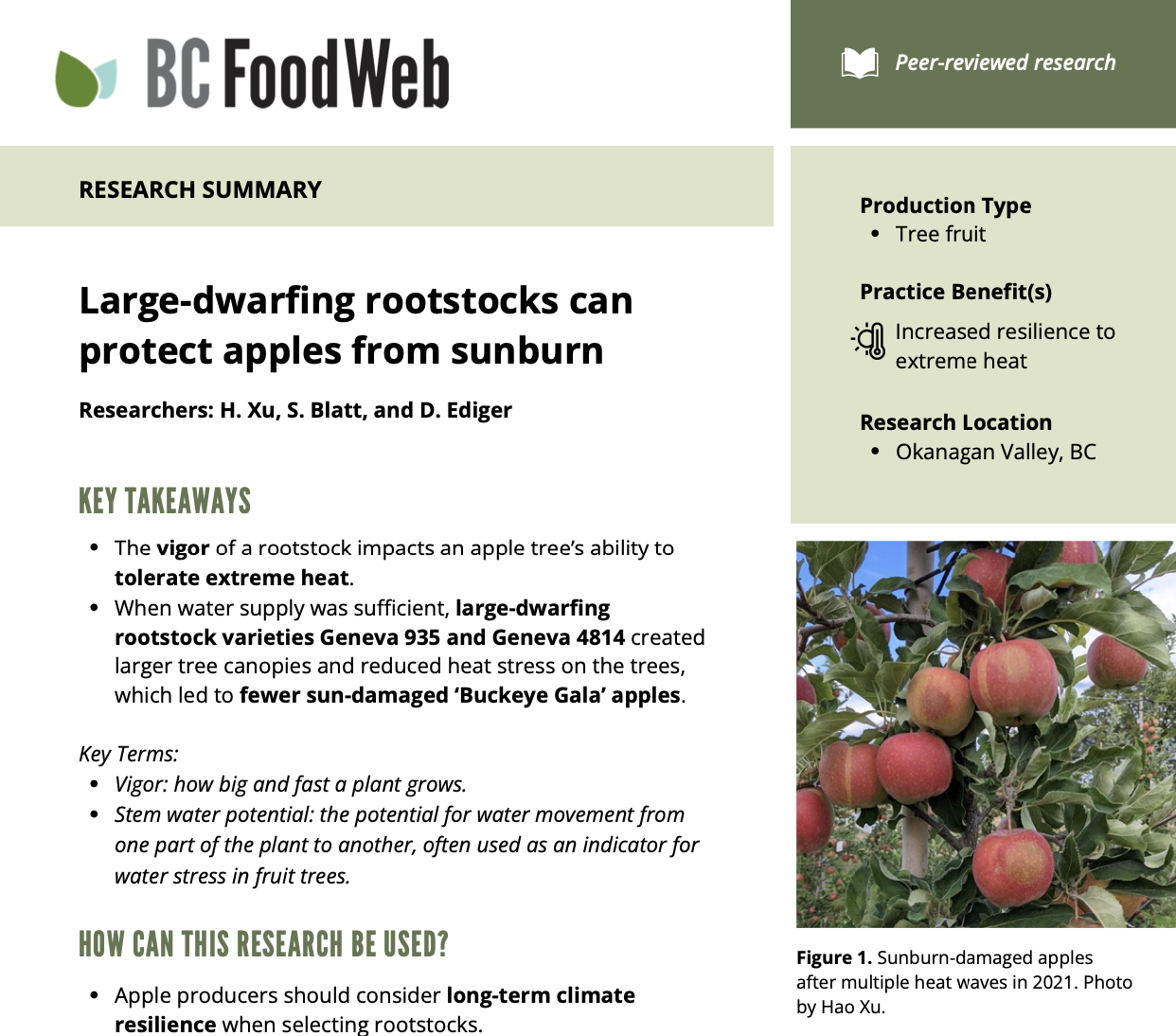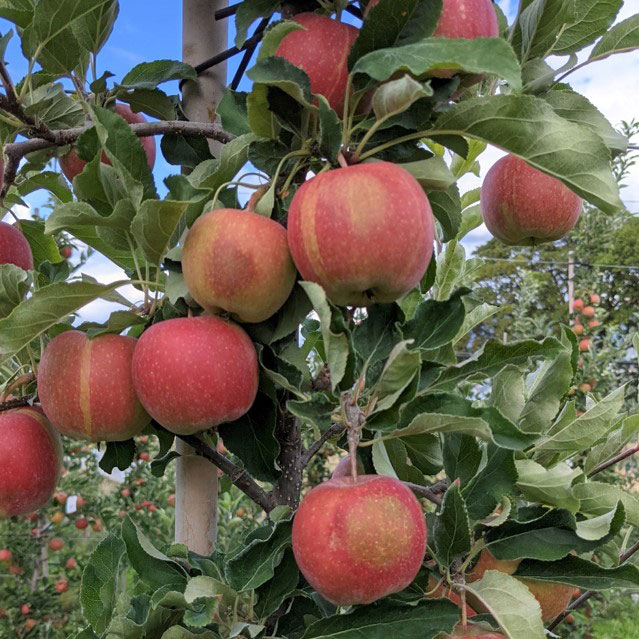Large-dwarfing rootstocks can protect apples from sunburn
Introduction
This study investigated if rootstock size selection can contribute to extreme heat resilience in ‘Buckeye Gala’ apple trees, measured through fruit sunburn damage.
About this Brief
This brief was prepared by Juliana Cao from the BC Food Web team with the help of Hao Xu and is based on the following scientific journal article:
Xu, Hao., Blatt, S., & Ediger, D. (2023). Tools for climate resilience in tree fruit I: large-dwarfing rootstocks can alleviate sunburn damage in “Buckeye Gala” apple. Canadian Journal of Plant Science, 103(1), 128-132. https://doi.org/10.1139/cjps-2022-0080
Key Findings
- The vigor (size) of a rootstock impacts an apple tree’s ability to tolerate extreme heat.
- When water supply was sufficient, large-dwarfing rootstock varieties Geneva 935 and Geneva 4814 created larger tree canopies and reduced heat stress on the trees, which led to fewer sun-damaged ‘Buckeye Gala’ apples.



